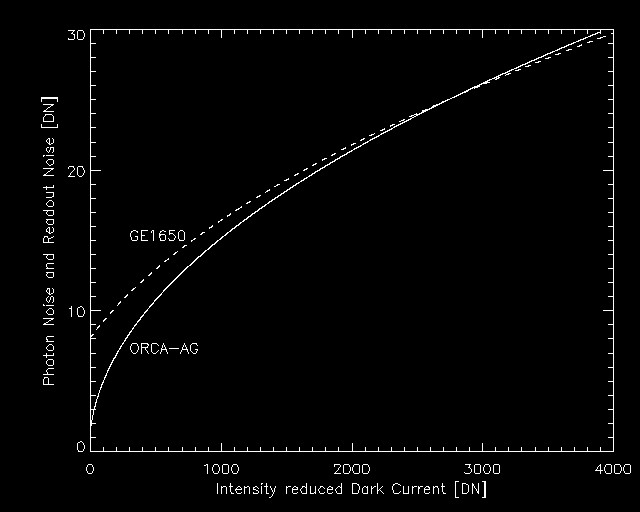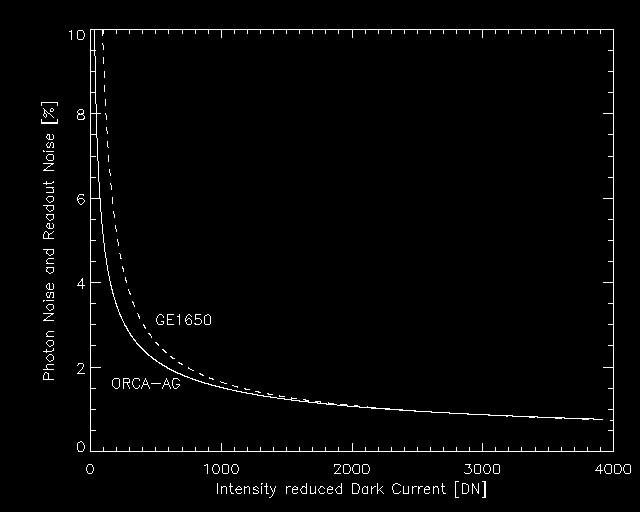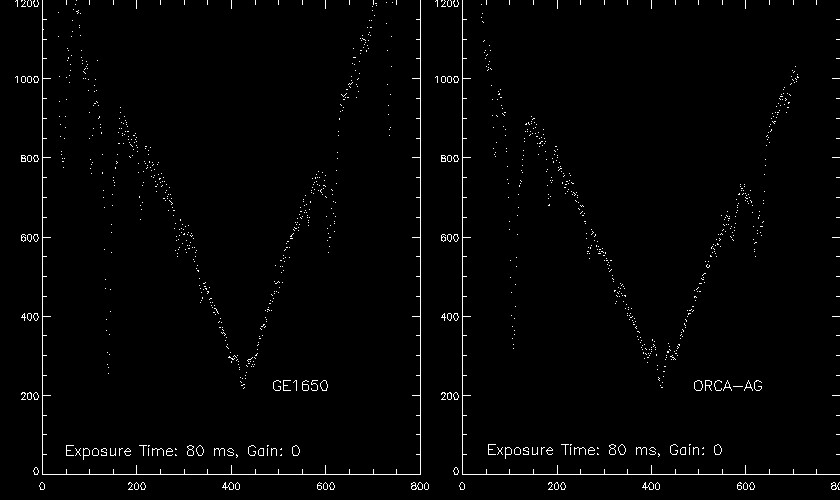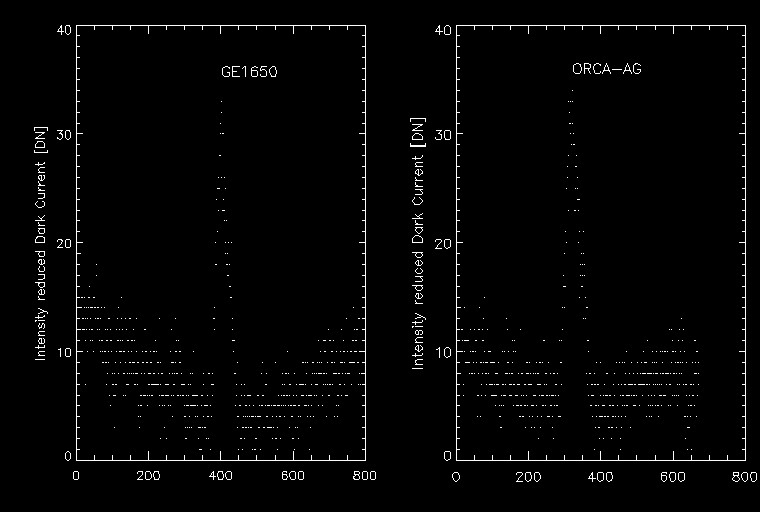* Dark frames of GE1650 were measured by H.Watanabe on 13th Mar. 2007. * Dark frames of ORCA-AG were measured by T.Matsumoto on 21th Mar. 2007. * A/D: 12 bit, BIN: 2x2, Exposure time: 80 ms, Frame Rate: 12 Hz, Gain: 0 * Continuous 16 frames were grabbed in 13 times at every 10 min. * Total duration is 120 min. * So, the number of all frames is 16x13 = 208 frames. * We consider the RMS of all pixels of eash CCD-chip as the typical level of the readout-noise.
[GE1650 results] * After about 40 min, dark-level becomes stable whose value is 26.6 DN (= 0.65 % of 12 bit FullWell). * The size of typical readout-noise is about 8.1 DN (= 0.20 % of 12 bit FullWell). (FullWell = 20,000 e-) [ORCA-AG results] * After about 10 min, dark-level becomes stable whose value is 192.4 DN (= 4.7 % of 12 bit FullWell). * The size of typical readout-noise is about 1.6 DN (= 0.04 % of 12 bit FullWell). ( FullWell = 18,000 e- )
[Comparison between GE1650 and ORCA-AG] Estimated sizes of noises of both cameras that are calculated from actually measured readout noises and dark levels.


Actual Ca K Line Profile obtained with GE1650 and ORCA-AG, on the only one line of the each CCD-chip. 1) On the solar disk (GE1650: 2007/03/09, ORCA-AG: 2007/03/26)
 2) Dark prominence (GE1650: 2007/03/16, ORCA-AG: 2007/03/21)
2) Dark prominence (GE1650: 2007/03/16, ORCA-AG: 2007/03/21)
